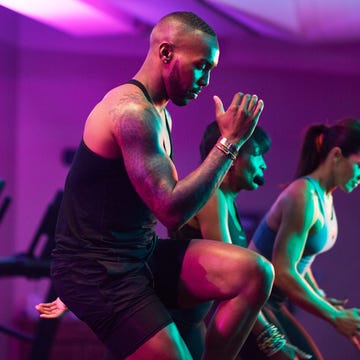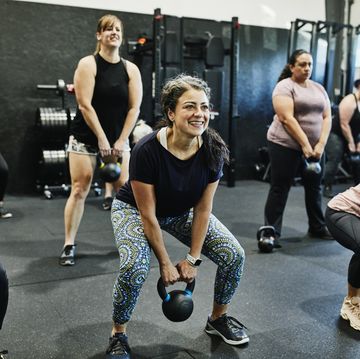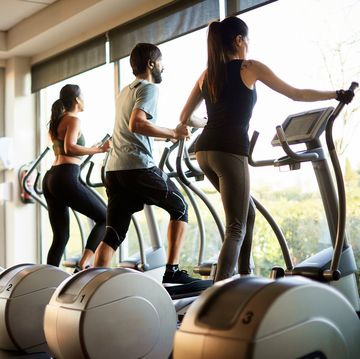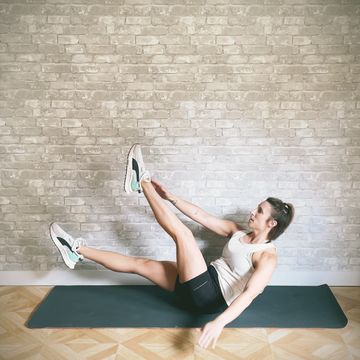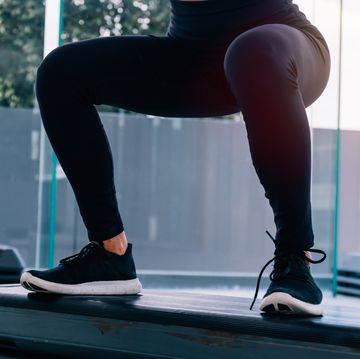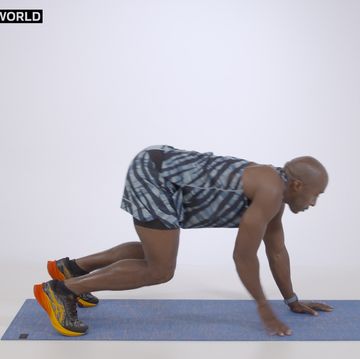Hitting the pavement is, unsurprisingly, most runner’s go-to cardio workout, but introducing cross training into your weekly routine can be a game-changer in improving performance and reducing injury.
Cross training is a great way to strengthen muscle groups that are not often used when running. Introducing exercises such as swimming, cycling, or high-intensity interval training (HIIT) also mixes up your routine, increasing mental stimulation and motivation. Keeping active on days without a scheduled run promotes active recovery, speeding up recovery times and reducing the potential for injury.
While you might feel running itself provides a sufficient aerobic workout, introducing other cardio workout moves into your routine allows you to improve your aerobic fitness, without subjecting your body to the repetitive impact of running.
What everyone's reading
HIIT sessions are great cardio workouts to get the blood pumping, as they are efficient and accessible. They can improve your running economy, explosive power, and mobility – all of which contributes to speedier PBs.
Seven equipment-free workout moves to get your heart racing
Mountain climbers
Mountain climbers are a fantastic full-body exercise that improves your cardiovascular system and increases mobility. They also train your core to maintain a strong plank position, which helps to maintain posture and stability on runs.
- Go into a high plank position – hands should be hip width apart, back flat and core engaged.
- Pull your right knee into your chest as far as you can.
- Return your right leg to the plank position and bring the other knee in.
- Keep your hips down and repeat the exercise as fast as you can.
Burpees
Burpees provide a notoriously tough cardio workout: activating your quads, hamstrings, glutes, core, back, shoulders and arms. The full-body burn helps you to run faster, more powerful miles.
- Start standing with your feet shoulder-width apart.
- Perform a deep squat, then hinge at the hip and plant your hands firmly on the ground.
- Jump your feet backwards into a high plank position.
- Perform a press-up: bend your elbows, lower your chest to the ground and push back up again.
- Jump your feet back in, hinge at the hip to return to a squat position.
- Push through your legs to finish with a squat jump.
Jumping lunges
Jumping lunges get the heart rate up and put you in split stance, which mimics the natural gait when running. Training these unilateral movements can help to correct form imbalances and improve your running economy.
- Start in a lunge position, with both legs at a 90º angle – ensure your knee is in line with your toes.
- Push off the ground into a jump, and switch your front and back foot.
- Keep your core engaged to land steadily and balance yourself before repeating the exercise.
Plank jacks
Plank jacks are a combined cardio and core-strengthening exercise. They also work your deep stabiliser muscles, which are responsible for keeping your running form strong and efficient, particularly when you’re flagging at the end of a long run.
- Start in a high plank position, shoulders over your wrists and feet together.
- Keeping your core braced and hips as low to the ground as possible, jump both legs out to the sides.
- Jump back to the starting position to complete one full rep.
Squat jumps
Squat jumps are great to include in a cardio workout as they use an explosive spring-like mechanism called the stretch-shortening cycle. This process plays a crucial role in how humans run, so training the motion improves running economy, speed and power.
- Stand with feet hip distance-width apart.
- Bend your knees and lower into a squat.
- Propel the body off the floor, extending through the legs.
- Control your landing and descend into a squat to repeat the movement.
Bear crawl
It might sound odd at first, but the bear crawl is a low-impact, high-intensity exercise that works the stabiliser muscles in your spine and pelvis to stop your torso from rotating. Working these muscles translates to a stronger, more efficient running pattern.
- Begin on all fours on the ground.
- Lift your knees off the ground and engage your core and glute muscles, and keep your back completely level.
- Raise your right hand and left foot simultaneously, and move them forward, placing them on the ground at the same time.
- Crawl forward 2-3 times, then repeat the motion crawling backwards.
Skater jumps
This exercise gets your heart rate up while working the hip abductors and gluteus medius. These muscles are found in your hips and are not worked in common exercises like squats and lunges. Strengthening them improves your stride and stability when running.
- Stand with feet hip-distance apart.
- Extend your right foot and swing your left hand forward.
- Hop sideways onto your right foot, bring your left hand across and in front of you, in a speed skater movement.
- Repeat the exercise on alternating legs.




